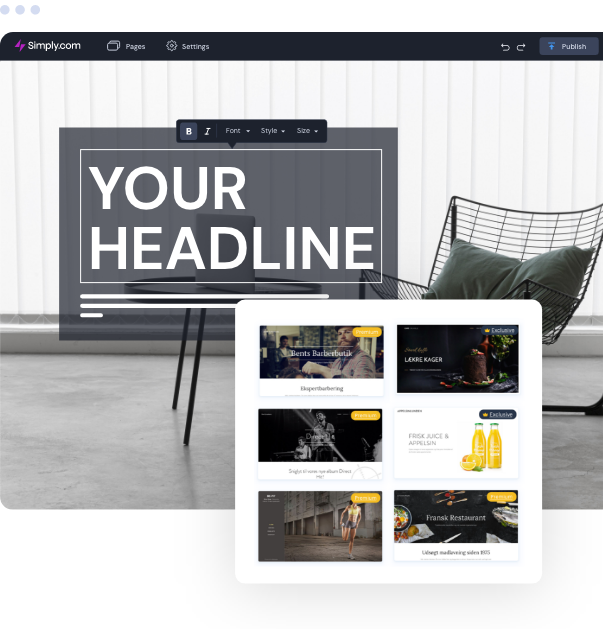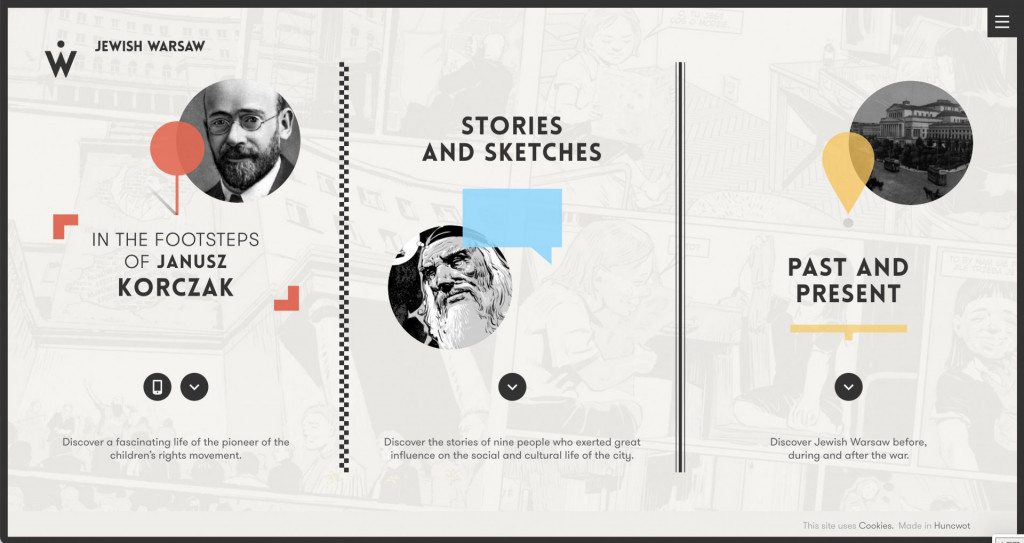Modern Web Site Style That Captures Attention and Converts
In a significantly digital landscape, modern web site layout has emerged as a pivotal consider recording user attention and driving conversions. By strategically employing aesthetic power structure, receptive designs, and engaging interactive components, designers can develop experiences that not just draw in site visitors but also promote meaningful interactions. Additionally, effective call-to-action strategies play a critical duty in directing individuals towards desired outcomes. As we check out these important components, it ends up being clear that comprehending their interaction can considerably influence an internet site's efficiency and customer fulfillment. What are the crucial elements that really make a difference?
Value of Visual Hierarchy
Aesthetic power structure is an important component in website design, as it overviews customers' focus and improves their general experience. By strategically organizing web content, developers can route customers to the most crucial info initially, thus increasing engagement and improving use.
Incorporating a rational circulation in content setup is important; for circumstances, placing the most critical info on top of a page cultivates instant acknowledgment. Additionally, consistent use typography, such as differing font dimensions and designs, assists establish a clear content framework. This organization not just aids in navigation but likewise builds trust fund, as users really feel a lot more comfortable when they can quickly locate what they are seeking.
Eventually, a well-executed aesthetic pecking order not just enhances aesthetic charm but additionally considerably affects user habits. By prioritizing essential elements and making certain a seamless experience, designers can properly transform visitors into customers, enhancing the value of this foundational style concept in modern-day website development.
Responsive Design for All Devices
Producing a seamless experience across numerous tools is crucial in today's electronic landscape, where customers accessibility websites from desktop computers, mobile phones, and tablets alike. Responsive layout is a crucial approach that ensures sites adjust fluidly to various screen dimensions, resolutions, and orientations. By employing adaptable grids, pictures, and CSS media queries, designers can produce designs that maintain visual honesty and performance, despite the gadget being used.
The relevance of receptive layout extends beyond looks; it straight impacts individual engagement and conversion prices. A web site that operates well on all gadgets motivates longer check outs and lowers bounce prices, as users are a lot more likely to interact with web content that is very easy to browse. Moreover, internet search engine, specifically Google, focus on mobile-friendly websites in their rankings, making responsive design an important part of search engine optimization (SEO)
Integrating receptive layout not only enhances individual experience however also simplifies the growth process. By developing a single website that works throughout devices, organizations can save time and sources compared to establishing different mobile and desktop variations. Inevitably, responsive layout is a basic approach for contemporary website design, ensuring accessibility and contentment for all individuals, despite their tool.
Engaging Interactive Components
While a receptive design prepares for a practical website, integrating engaging interactive components is vital for recording customer focus and fostering much deeper connections. Website Design. Interactive aspects, such as animations, tests, and clickable infographics, create a more vibrant customer experience, motivating site visitors to spend even more time on the website
Incorporating interactive features can also assist users via complicated info, making it much easier to absorb content. Interactive sliders can highlight item variations, while embedded video clips can give demos or endorsements that reverberate even more than fixed pictures or message. In addition, gamification techniques, like benefits for completing jobs or involving with content, can enhance user inspiration and retention.
Efficient usage of interactive aspects not only improves the customer experience but can also lead to greater conversion prices. It is important to stabilize interactivity with performance; extremely complex features may impede site rate, adversely influencing user satisfaction.
Structured Navigation Practices
Efficient navigating is a keystone of any type of effective internet site, as it straight influences user experience and content accessibility. Structured navigating practices ensure that users can conveniently locate details, improving their interaction with the website. A well-structured navigation menu must be intuitive and basic, commonly including a minimal variety of primary classifications to prevent frustrating site visitors.
To achieve structured navigation, developers need to focus on a hierarchical framework that logically arranges material. Executing breadcrumb routes can provide customers with context about their current area within the website, permitting smooth backtracking. In addition, using drop-down food selections can effectively save area while still supplying accessibility to subcategories.
Responsive layout is essential, as navigation should be functional across all tools (Website Design). Mobile customers, in specific, advantage from touch-friendly food selections and retractable sections that keep use without jeopardizing aesthetics

Efficient Call-to-Action Strategies
A well-crafted call-to-action (CTA) is necessary for guiding individuals towards preferred outcomes on an internet site, as it motivates them to engage with material or purchase. To optimize their effectiveness, CTAs ought to be clear, engaging, and purposefully placed throughout the website.
First, use action-oriented language that communicates urgency or value, such as "Begin," "Join Currently," or "Insurance claim Your Discount rate." This language not just encourages individuals yet additionally sets clear expectations about the next actions.
Second, take into consideration layout aspects; CTAs ought to attract attention visually through contrasting colors, adequate whitespace, and popular positioning. A button that is simple to see and click increases the chance of individual interaction.
Additionally, customizing CTAs based on customer actions or demographics can substantially boost involvement. Tailored messages reverberate much more with individuals, driving greater conversion rates.

Final Thought
These elements jointly improve customer experience, making certain that site visitors continue to be involved and inspired to check out material even more. By prioritizing these design principles, businesses can considerably enhance individual retention and conversion prices, inevitably leading to better success in the digital landscape.
In a significantly electronic landscape, contemporary site design has actually emerged as a pivotal variable in catching customer attention and driving conversions.Visual hierarchy is a crucial component in web site layout, as it overviews individuals' attention and improves their total experience.The importance of receptive design prolongs past aesthetics; it straight influences user involvement and conversion rates.Including responsive design not just improves user experience yet additionally improves the development process. Inevitably, receptive layout is an essential approach for modern-day site style, making certain ease of access index and satisfaction for all customers, regardless of their device.